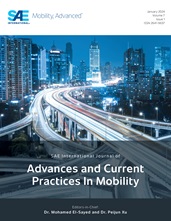Error in suspension asymmetry or tire parameters may lead to vehicle drifting laterally from its intended straight-line path, which is called vehicle pull. Driver then needs to apply constant steering correction to maintain the vehicle in straight line which will lead to high driver fatigue and deteriorate driving experience. Manufacturing a perfectly symmetric suspension system is impractical, however an insight into the manufacturing tolerances of suspension system at the early design stage can be extremely useful. Also tire force and moment parameters at straight line operation and its maximum allowable variations will help in defining the tire parameter specifications and tolerances.
The objective of this study was to develop a 1D model of suspension and tire system which can predict the torque experienced in steering and drift of the vehicle from straight line due to the tire force and moment and asymmetric suspension geometry. The model assumes small tire slip angles (as the vehicle is running in straight line), rigid steering system and constant vehicle speed. Second part of the work focused on the sensitivity of suspension and tire parameters on vehicle pull and identifying the tolerance limits to mitigate vehicle pull. The developed model has been validated against the observation from physical testing for different tire combinations.
Modelling of suspension asymmetries in Multi Body Dynamics (MBD) domain is time consuming and Pacejka formulation of tire will for manufacturing variations will require multiple tire testing. The tool discussed in this paper can be used for quick evaluation of vehicle pull, within a fraction of time of that required for MBD. Additionally, the tool is can be used to predict the limits of suspension camber, caster, kingpin inclination (KPI) and tire parameters such as conicity, plysteer and ply residual aligning torque (PRAT) etc. This information can further be used for defining the tire manufacturing tolerances.
